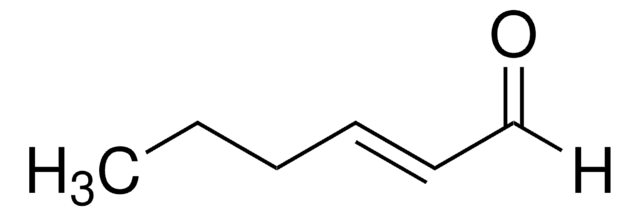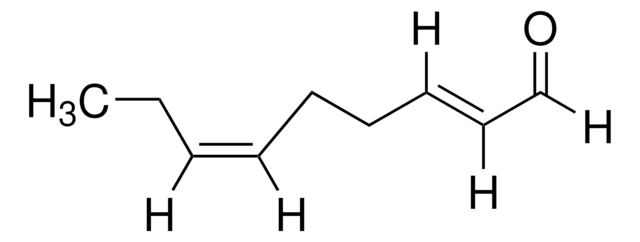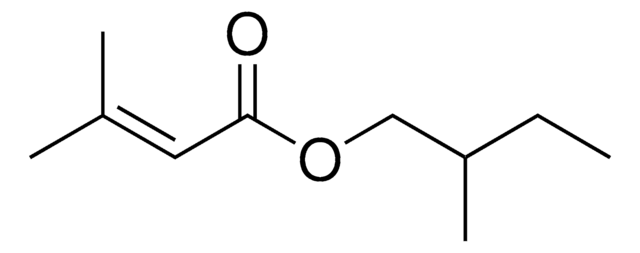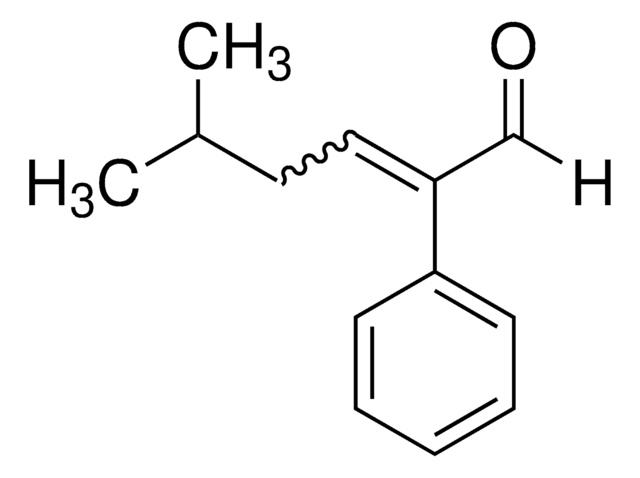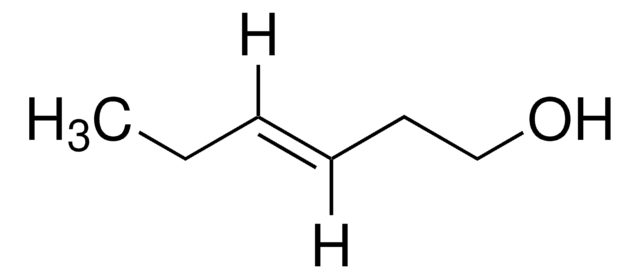W256102
cis-3-Hexenal solution
50% in triacetin, stabilized
Synonyme(s) :
(Z)-3-hexenal solution
About This Item
Produits recommandés
Source biologique
synthetic
Niveau de qualité
Qualité
Fragrance grade
Halal
Kosher
Agence
follows IFRA guidelines
Conformité réglementaire
EU Regulation 1223/2009
FDA 21 CFR 117
Contient
α-tocopherol as stabilizer (synthetic)
Concentration
50% in triacetin
Indice de réfraction
n20/D 1.44
Point d'ébullition
20 °C/0.2 mmHg
Densité
0.982 g/mL at 25 °C
Application(s)
flavors and fragrances
Documentation
see Safety & Documentation for available documents
Allergène alimentaire
no known allergens
Allergène de parfum
no known allergens
Propriétés organoleptiques
apple; fatty; green; fruity
Température de stockage
2-8°C
Chaîne SMILES
CC\C=C/CC=O
InChI
1S/C6H10O/c1-2-3-4-5-6-7/h3-4,6H,2,5H2,1H3/b4-3-
Clé InChI
GXANMBISFKBPEX-ARJAWSKDSA-N
Catégories apparentées
Application
Clause de non-responsabilité
Mention d'avertissement
Warning
Mentions de danger
Conseils de prudence
Classification des risques
Eye Irrit. 2 - Flam. Liq. 3
Code de la classe de stockage
3 - Flammable liquids
Classe de danger pour l'eau (WGK)
WGK 3
Point d'éclair (°F)
96.0 °F
Point d'éclair (°C)
35.55 °C
Équipement de protection individuelle
Eyeshields, Faceshields, Gloves, type ABEK (EN14387) respirator filter
Faites votre choix parmi les versions les plus récentes :
Déjà en possession de ce produit ?
Retrouvez la documentation relative aux produits que vous avez récemment achetés dans la Bibliothèque de documents.
Les clients ont également consulté
Notre équipe de scientifiques dispose d'une expérience dans tous les secteurs de la recherche, notamment en sciences de la vie, science des matériaux, synthèse chimique, chromatographie, analyse et dans de nombreux autres domaines..
Contacter notre Service technique

